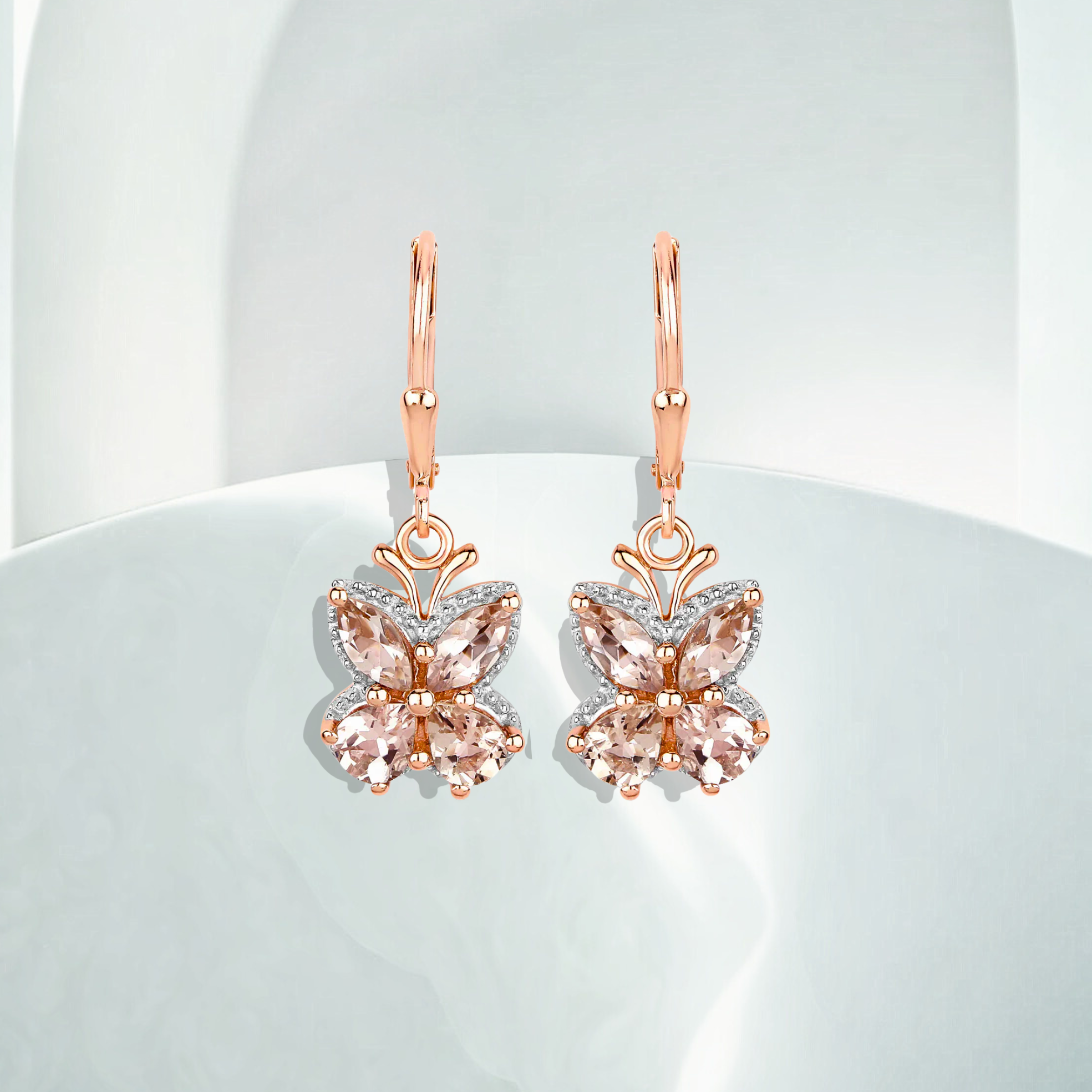
The Ethical Choice: Why Millennials Are Choosing Lab-Grown Diamonds
Millennials are making a conscious effort to make ethical choices in various aspects of their lives, including the jewelry they wear. Traditional mining practices have long been associated with environmental destruction and human rights abuses. As a result, there has been a growing interest in lab-grown diamonds among this generation. This article explores the reasons why millennials are opting for lab-grown diamonds and the implications this shift has on the diamond industry as a whole.
Understanding the Millennial Mindset
Before delving into why lab-grown diamonds appeal to millennials, it is important to understand their mindset. Millennials are known to prioritize sustainability and social responsibility. They are concerned about the impact their choices have on the environment and society. This mindset sets the stage for the rise of lab-grown diamonds.
The Value of Sustainability for Millennials
One key factor driving millennials towards lab-grown diamonds is their commitment to sustainability. Traditional diamond mining can have devastating consequences for the environment. The process involves deforestation, soil erosion, and extensive water usage. This not only affects the local ecosystems but also contributes to climate change.
Lab-grown diamonds, on the other hand, are created in a controlled laboratory environment, reducing the need for destructive mining practices. These diamonds are grown using advanced technology that mimics the natural diamond formation process. By opting for lab-grown diamonds, millennials can enjoy the beauty and elegance of diamonds without contributing to environmental degradation.
Additionally, millennials are drawn to the transparency of the lab-grown diamond industry. They can trace the origin of their diamonds and ensure they are produced in an environmentally responsible manner. This level of transparency aligns with their values and gives them the confidence to make an ethical purchase.
Millennials and the Shift in Consumer Behavior
Another driving force behind the rise of lab-grown diamonds is the changing consumer behavior among millennials. This generation is more informed and skeptical of traditional marketing tactics. They actively seek out information and make informed choices based on their values.
Lab-grown diamonds offer millennials the opportunity to make a statement with their purchase. They can support innovative technology and ethical manufacturing practices, potentially influencing the traditional diamond industry to adopt more sustainable methods. By choosing lab-grown diamonds, millennials are not only making a fashion statement but also a statement about their values and their vision for a more sustainable future.
Furthermore, lab-grown diamonds provide millennials with a unique opportunity to express their individuality. These diamonds can be customized to suit their preferences, allowing them to create one-of-a-kind pieces that truly reflect their personal style. This customization aspect resonates with millennials who value uniqueness and self-expression.
In conclusion, millennials' increasing preference for lab-grown diamonds is driven by their strong commitment to sustainability and transparency. Furthermore, their evolving consumer behavior, characterized by a desire for ethical and personalized choices, aligns perfectly with the values embodied by lab-grown diamonds. By selecting lab-grown diamonds, millennials are actively contributing to a more sustainable and ethical diamond industry, while also expressing their unique individuality. As the demand for lab-grown diamonds continues to surge, it is evident that millennials are poised to reshape the future of the diamond industry.
The Rise of Lab-Grown Diamonds
The increasing popularity of lab grown diamonds can be attributed to several factors. One of the key drivers is the advancement in scientific technology that allows for the creation of diamonds in a lab setting.
The Science Behind Lab-Grown Diamonds
Lab grown diamonds are created through a process called chemical vapor deposition (CVD) or high-pressure, high-temperature (HPHT) synthesis. These methods mimic the natural conditions under which diamonds are formed. By using a small diamond seed, carbon atoms are deposited layer by layer, forming a diamond crystal over time.
This intricate process requires precision and expertise. Scientists carefully control the temperature, pressure, and gas composition to create the ideal environment for diamond growth. It is a delicate dance of science and art, where the tiniest variations can affect the outcome of the diamond's characteristics.
The result is a diamond that possesses the same physical and chemical properties as a mined diamond. This scientific breakthrough has paved the way for lab grown diamonds to enter the market as a viable alternative to traditional mined diamonds.

Quality and Cost: Comparing Lab Grown and Mined Diamonds
Lab grown diamonds are often indistinguishable from mined diamonds to the naked eye. They possess the same brilliance, sparkle, and durability. In fact, some argue that lab-grown diamonds can have superior quality since they can be produced with fewer flaws and in larger sizes.
But what about the cost? Well, lab grown diamonds have a clear advantage in this area. They are typically more affordable than their mined counterparts. The production process is more efficient and streamlined, resulting in lower costs. This affordability makes lab grown diamonds accessible to a wider range of consumers, including millennials who may have budget constraints.
Furthermore, the ethical implications of lab grown diamonds cannot be ignored. Mined diamonds often come with a dark history of human rights abuses and environmental damage. In contrast, lab-grown diamonds are a more sustainable and ethical choice. They are created without the need for destructive mining practices and do not contribute to the exploitation of workers in diamond mines.
As the demand for sustainable and ethically sourced products continues to grow, lab grown diamonds are becoming an increasingly popular choice. They offer consumers the opportunity to own a beautiful and high-quality diamond without the ethical and environmental concerns associated with mined diamonds.
The Ethical Implications of Diamond Mining
While traditional diamond mining has its roots in history, it is not without its ethical concerns. This has led millennials to seek out alternatives that align with their values.
Delving deeper into the world of diamond mining reveals a complex web of ethical considerations that extend beyond the surface glitter of these precious stones. The journey of a natural diamond from deep within the earth to a glittering piece of jewelry on display involves a series of environmental and social impacts that are often overlooked.
Environmental Impact of Traditional Diamond Mining
Traditional diamond mining is known to have a significant impact on the environment. The excavation of large areas for mining disrupts ecosystems, leading to habitat loss and biodiversity depletion. Moreover, the use of heavy machinery and explosives contributes to air, water, and soil pollution.
Exploration for new diamond deposits can also result in deforestation and displacement of indigenous communities, further exacerbating the environmental toll of traditional mining practices. The carbon footprint of transporting mined diamonds across continents adds another layer of environmental concern to the industry.
By choosing lab grown diamonds, millennials can minimize their ecological footprint and contribute to the preservation of natural resources. These diamonds are created in controlled laboratory settings using minimal resources and energy, reducing the strain on the environment caused by traditional mining practices.
Human Rights Concerns in the Diamond Industry
An often-overlooked aspect of the diamond industry is the human rights abuses associated with mining. In some regions, diamond mining is linked to child labor, unsafe working conditions, and exploitation of local communities.
Furthermore, the revenue from diamond mining in certain areas has been linked to funding conflicts and fueling civil wars, giving rise to the term "blood diamonds" or "conflict diamonds." The human cost of these diamonds tarnishes their beauty with the suffering of those involved in their extraction.
Lab grown diamonds offer millennials the assurance that their purchase is not contributing to these societal injustices. They can have peace of mind knowing that no human lives were exploited in the production of their jewelry. By supporting ethically sourced and produced diamonds, consumers can play a role in promoting fair labor practices and sustainable mining initiatives within the industry.
The Appeal of Ethical Consumerism
Ethical consumerism is gaining traction among millennials, and lab-grown diamonds perfectly fit into this movement.
How Lab Grown Diamonds Fit into Ethical Consumerism
Ethical consumerism is all about making choices that align with one's values and seeking products that have been produced responsibly. Lab-grown diamonds, with their minimal environmental impact and absence of human rights concerns, offer millennials the opportunity to wear beautiful jewelry while staying true to their ethical principles.
The Influence of Social Media on Ethical Choices
Social media platforms like Instagram and Facebook have become powerful tools for shaping millennials' ethical choices. By providing millennials with unfettered access to a wealth of information and stories pertaining to social and environmental issues, these platforms have ignited a heightened awareness of global challenges. As a result, millennials have developed a strong desire to support brands that prioritize sustainability and ethical practices, thereby fueling a growing demand for conscious consumerism.
The Future of the Diamond Industry
The rise of lab grown diamonds has sparked conversations about the future of the diamond industry and the potential impact on the global market.
Predicted Trends in Diamond Consumption
Experts anticipate that lab grown diamonds will continue to gain acceptance and market share in the coming years. As more consumers become aware of the ethical and environmental benefits of lab-grown diamonds, their popularity is expected to increase.
The Potential Impact of Lab Grown Diamonds on the Global Market
The growing demand for lab grown diamonds could disrupt the traditional diamond industry's monopoly. As more consumers switch to lab grown diamonds, the market dynamics are likely to shift. Traditional diamond mining companies may be forced to adapt and incorporate more sustainable practices to meet this change in consumer preferences.
In conclusion, millennials' choice to embrace lab grown diamonds can be attributed to their commitment to sustainability, the transparency offered by the lab grown diamonds industry, and their desire for ethical consumerism. As this trend continues, it is expected to have a significant impact on the diamond industry, driving a shift towards more sustainable and responsible practices. The rise of lab grown diamonds represents an ethical choice that millennials are making to create a more sustainable future. If anyone wants to buy gemstone jewelry in bulk can visit Fine Color Jewels


 Amethyst
Amethyst White Topaz
White Topaz Blue topaz
Blue topaz Emerald
Emerald Garnet
Garnet Sapphire
Sapphire Ruby
Ruby Sapphire
Sapphire Canary Yellow Sapphire
Canary Yellow Sapphire Alexandrite
Alexandrite Opal
Opal Moissanite
Moissanite Pink Cubic Zirconia
Pink Cubic Zirconia Emerald
Emerald
 Citrine
Citrine

 Others
Others
 Lab Grown Diamond
Lab Grown Diamond Lab Grown Padparadscha
Lab Grown Padparadscha Lab Grown Colombian Emerald
Lab Grown Colombian Emerald Lab Grown Ruby
Lab Grown Ruby Lab Grown Purple Sapphire
Lab Grown Purple Sapphire




 January - Garnet
January - Garnet February - Amethyst
February - Amethyst March - Aquamarine
March - Aquamarine April - Diamond
April - Diamond May - Emerald
May - Emerald June Alexandrite
June Alexandrite July - Ruby
July - Ruby August - Peridot
August - Peridot October - Opal
October - Opal November - Citrine
November - Citrine December - Blue_Topaz
December - Blue_Topaz





